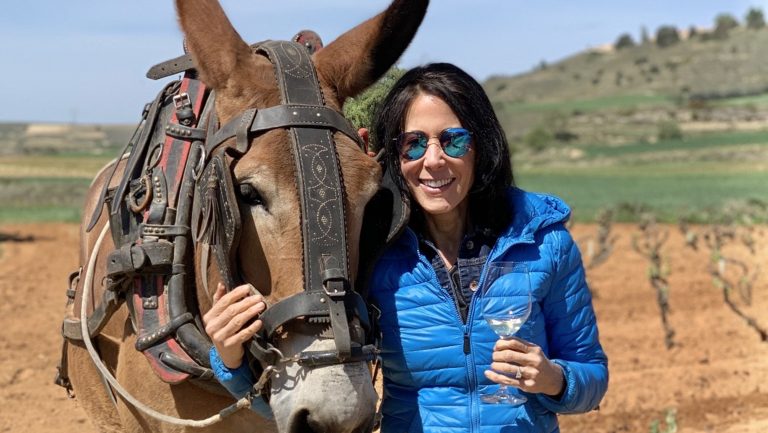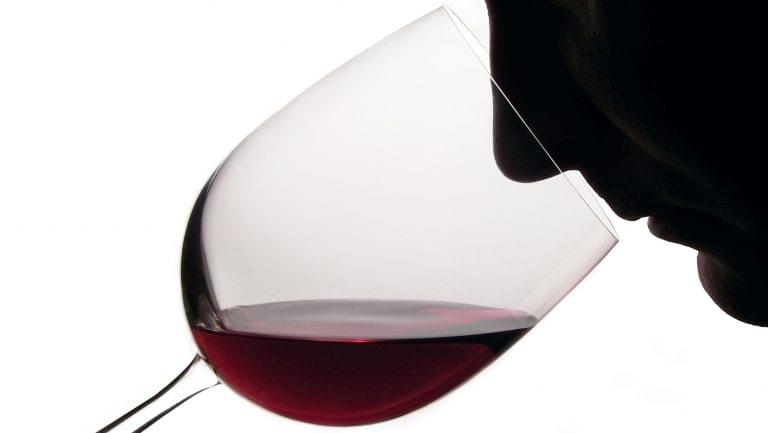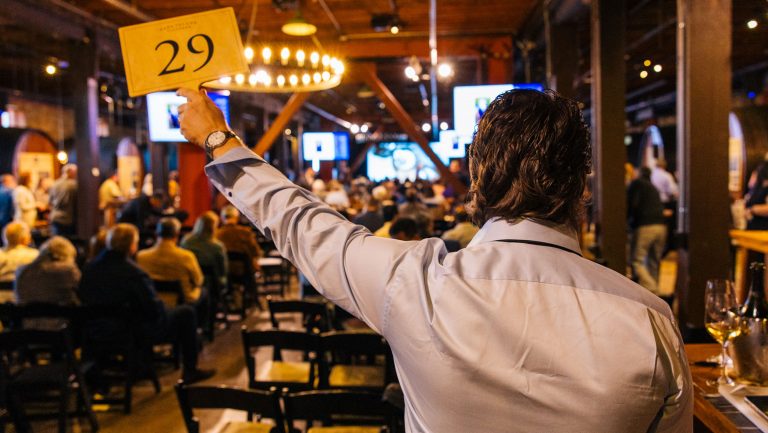A week after restaurants in Portland, Oregon, were allowed to reopen for on-site dinner service in June, Arden Wine Bar owner and sommelier Kelsey Glasser tested positive for COVID-19. Glasser was lucky; unlike Wesley Brown, one of the wine bar’s servers who also tested positive, she had barely any symptoms. But the one that terrified her was the one that threatened to undermine her career as a wine professional: the loss of smell and taste.
“It was scary,” says Glasser. “I would blow my nose and stick it up to vanilla, cinnamon, or a lemon. And it was like: nothing.” Although she could feel the temperature and texture of food while eating, it had zero flavor. At one point, Glasser put a spoonful of fermented habanero hot sauce on her tongue, but she couldn’t sense any tingling or flavor.
The loss of smell is a disconcerting, unpleasant experience for anyone. But for wine professionals, the consequences are far more disastrous—and potentially even career ending. Glasser isn’t the only wine professional who lost her senses of smell and taste due to COVID-19. New York-based sommelier Amanda Smeltz penned an Esquire article in July about how losing her senses of smell and taste (during what she assumed was COVID-19) caused an existential crisis.

Don’t miss the latest drinks industry news and insights. Sign up for our award-winning newsletters and get insider intel, resources, and trends delivered to your inbox every week.
“This total blackout of smell was unlike anything I’d ever experienced,” she wrote. “I found myself thinking for days about what it would be like if this were permanent loss, if herbs or coffee disappeared from my life—if wine did.” Even after recovering from COVID-19, wine professionals are grappling with continuing changes to some of their most essential senses. Those who’ve regained those senses are more appreciative of them than ever.
A Shock to the Senses
“Taste and smell are of primal importance to people in our field,” says food and wine writer Jordan Mackay, who contracted COVID-19 in early March while visiting New York City. “I believe that it’s a heightened responsiveness to these senses that drew many of us into the gastronomic world in the first place. Losing them would be disastrous, akin to going to broke and having to completely reinvent one’s life.”
Mackay says that as someone so passionate about wine and food, it was bizarre for him to suddenly feel so indifferent to it. “Without the immediate sensation of flavor, I have no interest in eating at all,” he says. “You can’t even appreciate texture without taste. And that’s the most despairing feeling I’ve known when it comes to food and drink. What’s most terrifying is that you don’t know if they will come back or not.”

Like many other COVID-19 symptoms, changes to smell and taste vary widely from one infected person to another. For wine writer Jamie Goode, the founder of WineAnorak and author of four books about wine, a disturbance in taste was an early indicator of COVID-19 when he caught the virus in early March. “I didn’t lose my sense of smell—it was just distorted,” says Goode. “Food tasted okay-ish, but because I’m tasting wines analytically, I noticed they weren’t right. They all had an additional taste—a sort of stony, slightly oxidized flavor—and the fruit was gone. Initially, I thought the wines were at fault, but shortly realized it was me.”
After New York City-based wine and food writer Lisa Denning, the founder of the Wine Chef, got sick in late March, it took 11 days until she could smell even a few things: coffee grinds, orange peels, blue cheese. Her ability to taste again was a longer, more gradual process. “It took at least three weeks to even get up to what I estimated was 80 percent of my smell and taste back,” says Denning.
Still, Denning’s sense of taste remained altered. For months, she noticed that her taste buds were more robust in the morning—“Sometimes I would purposefully save some of my dinner so I could eat it at breakfast!” she says—and she had no appetite for wine for more than a month. “It tasted horrible! Like bitter alcohol. There was no fruit,” she says, noting that she turned to refreshing gin and tonics instead. “When it stopped tasting horrible, it was still bland—lacking in fruit.” Finally, on May 4, when Denning was tasting a 2019 Domaine de Cala Rosé and a 2016 Boekenhoutskloof Cabernet Sauvignon, she says she felt as though her palate had fully returned. “The latter had all those lush cherry fruit flavors that had been lacking in red wines the previous couple of weeks,” she explains.
Denning, who has just started experiencing an intermittent metallic taste with certain foods, says she’s one of the lucky ones. She belongs to a “COVID-19 loss of smell and taste” Facebook group and says that many people haven’t gotten their taste back. “I feel so bad for them,” she says.

The Science of Anosmia
A week after Glasser first noticed she couldn’t smell anything, her sense of smell returned. “Every day when I woke up, I’d grab things and smell them,” she says. “Finally, I woke up and smelled some lotion and got the faintest hint of cocoa. I was so relieved.” Her senses of taste and smell took two full weeks to return entirely.
Most people who lose their sense of smell due to COVID-19 regain it within weeks, but some do not. Others regain partial smell, but they perceive aromas differently, something that could be just as difficult for wine professionals to cope with.
Brown, the Arden Wine Bar server who also tested positive for COVID-19, suffered from fever, body pain, a sore throat, and extreme physical exhaustion in addition to losing his senses of taste and smell. Although he has regained his ability to taste and smell, he says the flavors are dialed down a bit. “Everything tastes a little less vibrant than before,” says Brown, who was studying for his Wine & Spirits Education Trust Level 3 exam when COVID-19 hit. “Everything is a little less intense. Sweet things are a little more bland than they were before.”
Temporary anosmia, or loss of smell, is not uncommon with colds and sinus infections. But what’s different with COVID-19, says John Hayes, Ph.D., a professor of food science at Penn State’s College of Agricultural Sciences, is that loss of smell with the novel coronavirus is not due to “nasal obstruction,” or a stuffy nose. Instead, the virus indirectly affects olfactory sensory neurons.
In July, Sandeep Robert Datta, David Brann, and colleagues at Harvard Medical School published a paper in Science Advances showing that cells that contain our smell receptors don’t contain the ACE2 receptor, the backdoor by which the novel coronavirus is sneaking into our cells. These olfactory sensory neurons, which are located in the olfactory epithelium at the top of the nose, don’t have ACE2 on them, so the virus doesn’t attack them directly. Instead, the virus is aggressively attacking supporting cells that live “next door” to the sensory neurons, explains Dr. Hayes. “When those cells get inflamed, it perturbs the environment,” he says. “The cells and mucus layer get all screwed up. It’s a local perturbation of the region around the smell receptors.”
The scientists’ explanation for COVID-related loss of smell is good news because it means that the sensory neurons themselves aren’t damaged, which indicates that the novel coronavirus probably won’t cause permanent loss of smell in most people. Hayes, who is also the director of the Sensory Evaluation Center at Penn State, is one of the founders of the Global Consortium for Chemosensory Research (GCCR), which is collecting data on the specificity of smell and taste symptoms in COVID-19 patients. In April, the consortium launched an online survey, which is available in more than 30 languages; it has received 40,000 responses so far.

War of the Noses
When it comes to the sense of smell, millions of extra cells in the olfactory bulb may give women an advantage over men
Hayes says that the loss of smell is turning out to be one of the most common symptoms of COVID-19 infections. Half of all COVID patients report the symptom. That number climbs to 75 percent when looking at objective studies (studies where medical personnel are present to test the patient’s sense of smell). There is less data on loss of taste, but the first paper that Hayes and his colleagues at the GCCR published in Chemical Sciences about the results of the first 4,039 surveys they got back reveals that COVID-19-associated chemosensory impairment is not limited to smell; it also affects taste and chemesthesis, which is sensitivity to such chemicals as capsaicin (found in chile peppers) and menthol (found in peppermint).
There’s much more to learn about COVID-19, but Hayes says that rough estimates show that 80 percent of patients regain their senses of taste and smell in two to three weeks after they recover.
Back to the Glass
The first week she was home sick, Glasser led Arden’s weekly online wine tasting as if nothing was awry. “They were wines I’d tasted before, so I had some notes,” says Glasser. “But I did feel like a fraud.”
Brown says the whole ordeal shook his confidence a bit. “I get a little anxious when someone asks me to describe the wine,” he says. “What if what I’m tasting is a little bit different than what they’re going to taste?” Brown notices the biggest difference with the category that was previously his go-to preference: high-acid white wines, which taste slightly sour and less enjoyable now.
Mackay says that by day 14, he was back to his normal, healthy self, as though nothing had happened. But even this experienced wine professional had doubts. “Could I smell as finely as I did before? Was I able to get the whole aroma of a wine or a cup of coffee?” he asked. “I couldn’t be sure. Something didn’t seem exactly the same. Yet, when I compared notes with others, my sensations seemed as valid and precise as theirs.”
In the weeks after recovering from COVID-19, Mackay was able to get varietal cues from wines, but he was still plagued by the fear that he wasn’t smelling “the whole thing.”
Then, during a virtual dinner party with friends six weeks after his COVID-19 experience, he blind-tasted and correctly identified a 2016 Littorai Sonoma Coast Pinot Noir. “I pumped my fist in relief,” Mackay says. “I knew I was all the way back.”

Dispatch
Sign up for our award-winning newsletter
Don’t miss the latest drinks industry news and insights—delivered to your inbox every week.
Hannah Wallace writes about food, wine, sustainable agriculture, health, and travel for CivilEats.com, Inc., Food & Wine, Vogue, Portland Monthly, and the New York Times.







